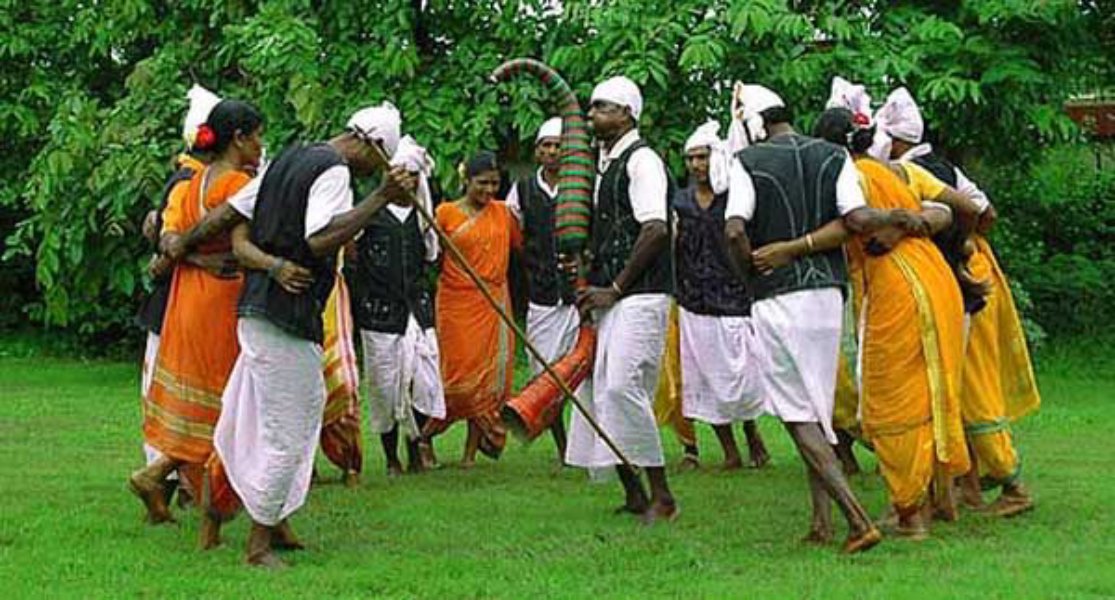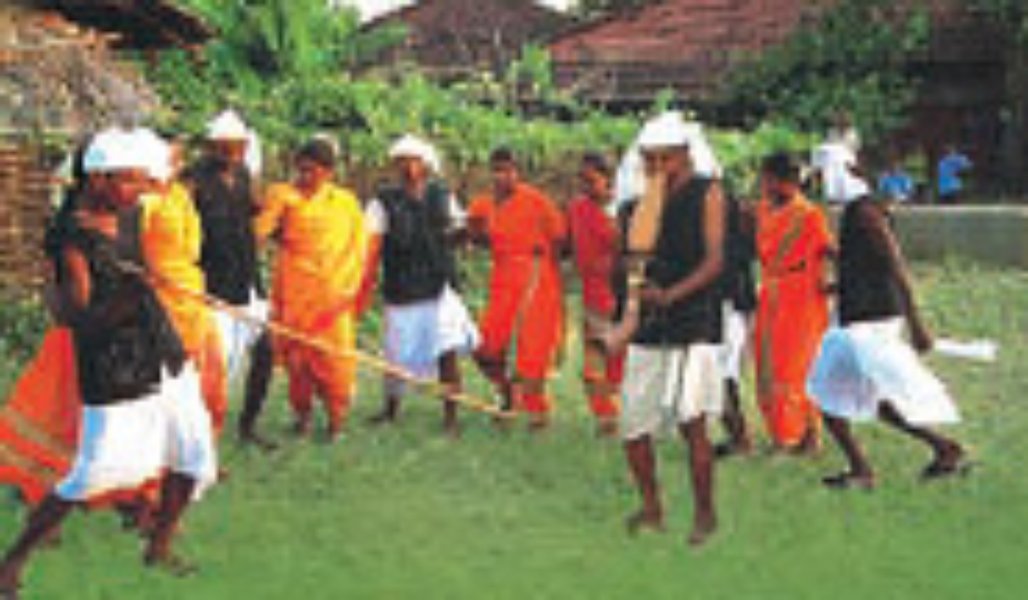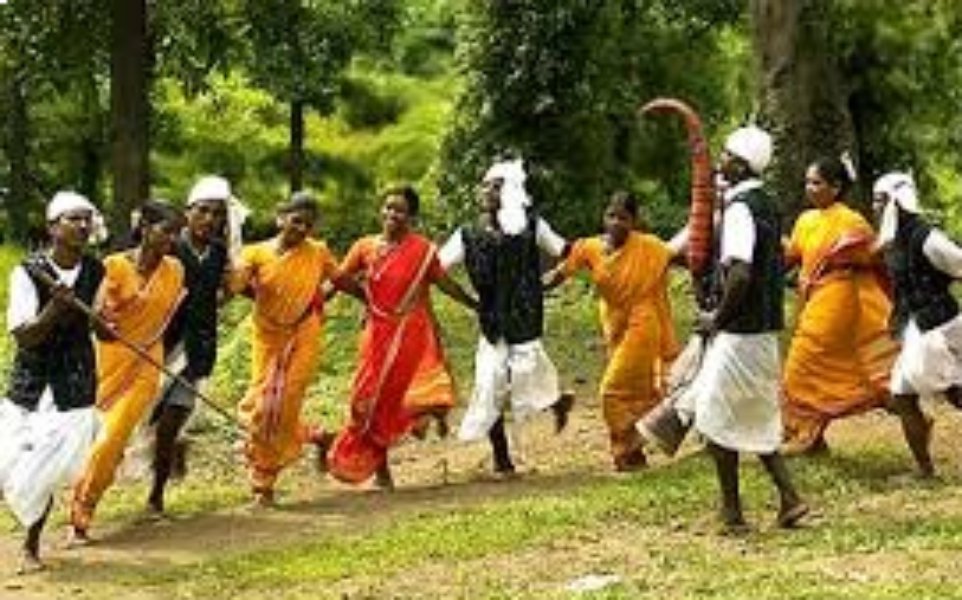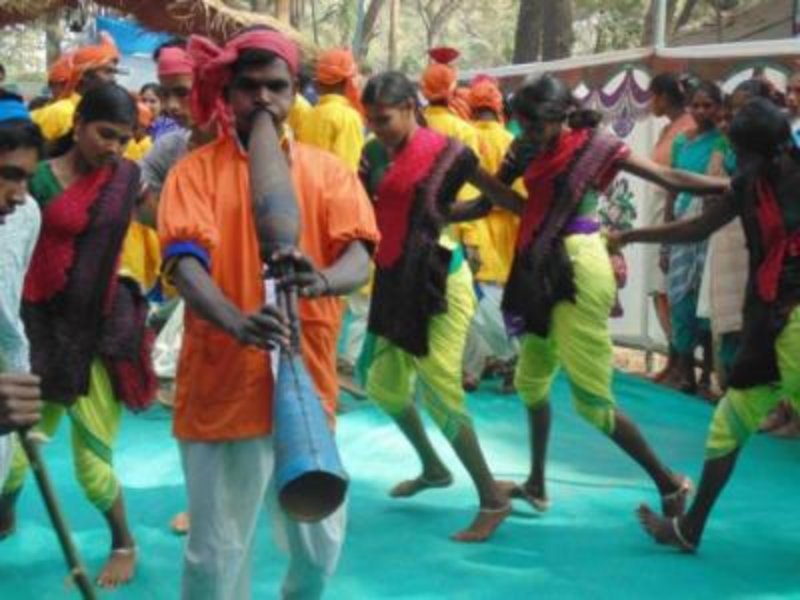
Themes
tribal clothing and textiles
Tarpa dance Attire, gujarat

Festive and post-festive events, creating a cohesive unit of cultural identity through dance and music. Tarpa Dance costumes of Gujarat are vibrant but earthy. As it becomes visible, all the performers of this dance put on their traditional earth-colored costume thereby giving away how closely they are connected to nature. Although women adorn themselves with ethnic jewelry and fancy head gears, men wear dhotis and turbans as part of their complete attire. Effectively, these costumes give an aesthetic value to the dance very well suitable for its opportunity to enhance the accompanying rhythm of movements and to add much more to its culture.

Tarpa has become part and parcel of the cultural and social practices of the Warli tribe of Gujarat, making it so potent and essential. Artistic expressions by this tribe like Tarpa dance are deeply rooted in their relationship with nature, community and spirituality. The Warli legendary embrace ethnic art forms, and their dances are seen during festivals and harvest celebrations as the most inspiring manifestation of their agrarian lives. The costumes of these dances tie them further to nature, expressed in simple yet meaningful dresses designed to symbolize unity and harmony within the community. The moving melodies of the Earth and gliding movements during the dance reveal appreciation for land by Warli people and the abundance of it all, creating a bond of belongingness and pride.

Tarpa dance costumes are made from natural materials commonly found in the rural tribal areas of Gujarat, in line with the rural and traditional lifestyles of Gujarat's tribal communities. Most men's duds are generally made of cotton or khadi, allowing free flow for ventilation, especially while performing these lively dances. For women, simple cotton sarees are draped or skirts and are mostly worn with lightweight cotton cholis. The ornaments are made either from metal, beads, or natural materials like wood and shells to further enhance the rustic look of the costume. Definitely, the Tarpa dance forms part of social culture in Gujarat, especially among tribals. This kind of activity is not only mere entertainment but it is also a very social household activity bringing community folks together. It has men and women dancing together in a circle during festivals, harvest celebrations and other significant events among its ethnographic characteristics; thus, giving it a sense of unity among people.

The Tarpa, a traditional wind instrument, marks the sound to coordinate movements, symbolizing the intimate relationship between music and dance to society. It builds the foundations for the preservation of cultures, makes adult bonds much more substantial and enriched while at the same time giving a sense of attachment and common identification to a group. Tarpa dance highly influences the people in Gujarat, especially those that live in rural and tribal settings. It acts as a unifying force between young and old and between the different strata of society in which all come together to celebrate culture and heritage in a collective manner.

